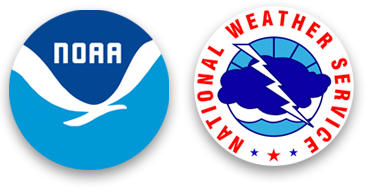Focusing AWIPS on Severe Weather Operations
Editor’s Note: In 2010, NOAA Office of Atmospheric Research Communications Director Barry Reichenbaugh recorded a series of oral histories with key researchers and others involved in the National Weather Service Modernization and Associated Restructuring, or MAR, during the 1980s and 90s. These oral histories have been republished on the Voices of NOAA website.
Carl Bullock began working for the National Weather Service as a meteorological intern when he was fresh out of college in 1973 — little did he know he had joined the NWS just in time to play a role in one of the agency’s most important eras: the Modernization.
After holding various different positions in a few different forecast offices, Bullock joined the Program for Regional Observing and Forecast Services (PROFS), a team that was working to improve the existing Automation of Field Operations and Services (AFOS), a technology that connected all field offices to a network of forecast and weather map data. Bullock’s role was to filter through the emerging set of requirements for AWIPS, a developing processing system that would eventually replace AFOS, and had to juggle various requirements from across NOAA, NWS, and even Congress while keeping the system’s focus on severe weather operations. AWIPS, an interactive computer system that integrates all meteorological and hydrological data with satellite and radar imagery, is a technologically-advanced information processing, display, and telecommunications system that is the cornerstone of the National Weather Service modernization and restructuring. By the turn of the century, the AWIPS system was implemented, helping to usher the NWS into the next century.
Here is an excerpt from his interview recorded June 2010:
On what it was like to work at NOAA during the Modernization:
“It's been ... wonderful working in NOAA. I really have enjoyed it. I enjoyed the people I worked with. And enjoyed working with the technology and seeing that. I mean, the changes are just almost unbelievable from the time I started this as a meteorologist intern until I retired. So, it's been very satisfying on -- on those two aspects. I think at the time we put our system in place in 1999, it was arguably the best system in the world for what it -- for what it did. The GFE [Graphical Forecast Editor] is still rather unique. That set of software that allows the forecaster to create a digital representation of the forecast data is still relatively unique. And it's been adopted by a number of countries internationally now. So that ... that's been very gratifying.”
Resources and Additional Reading
-
Full interview transcript and audio recording with Carl Bullock, June 2010 available here: https://voices.nmfs.noaa.gov/carl-s-bullock
